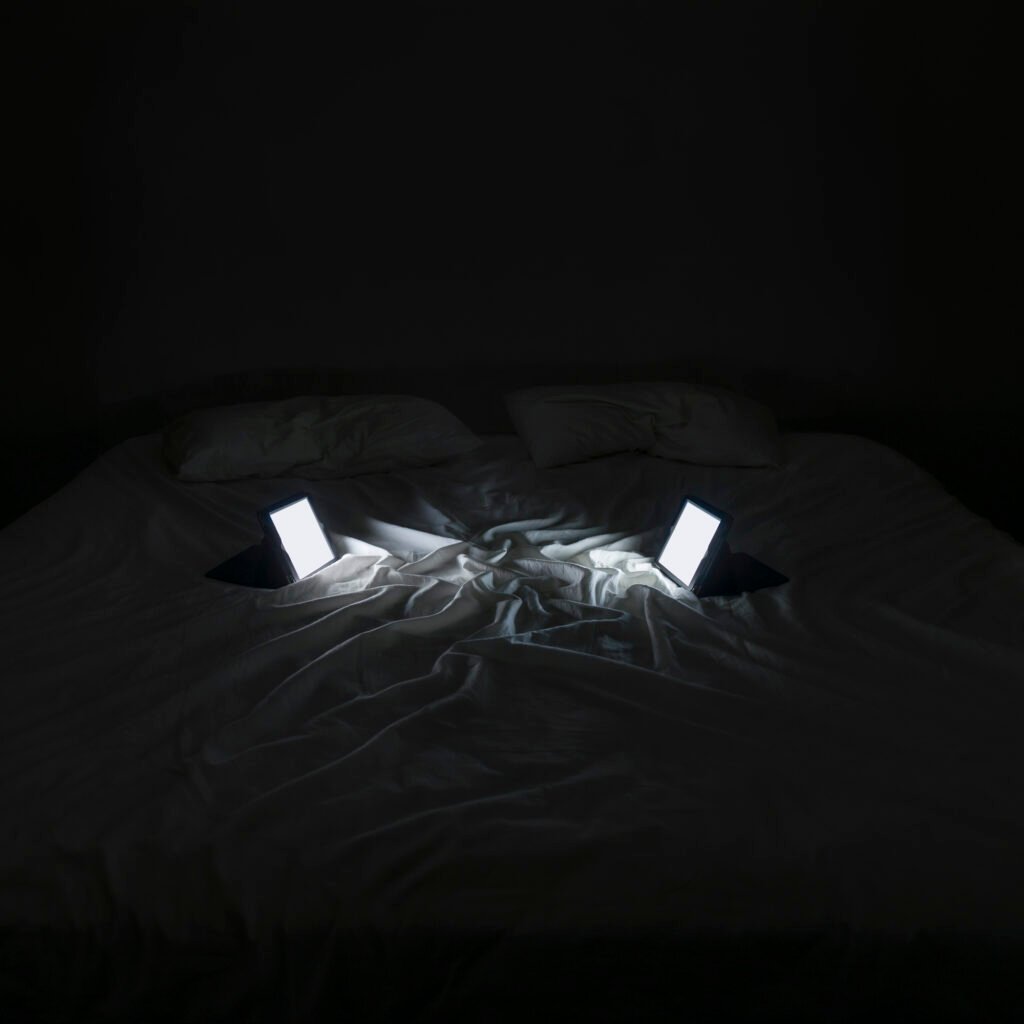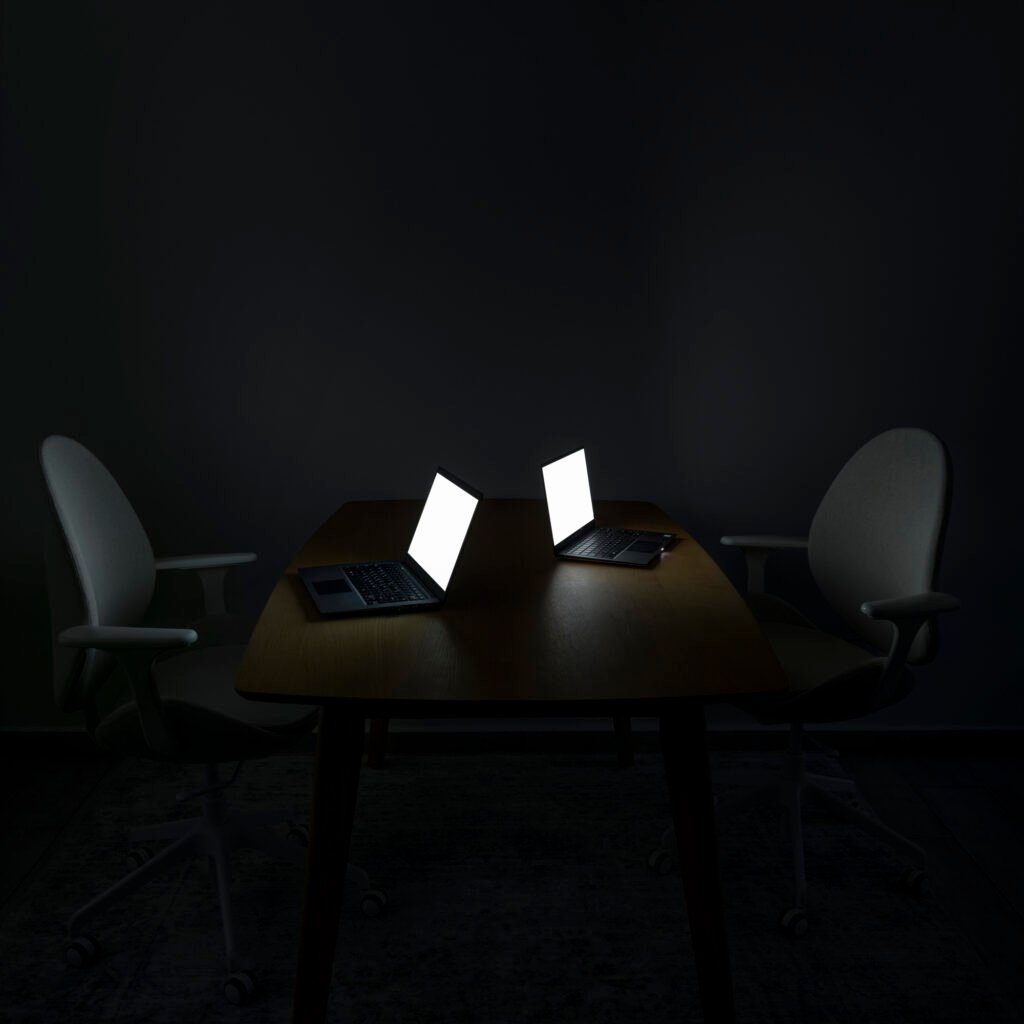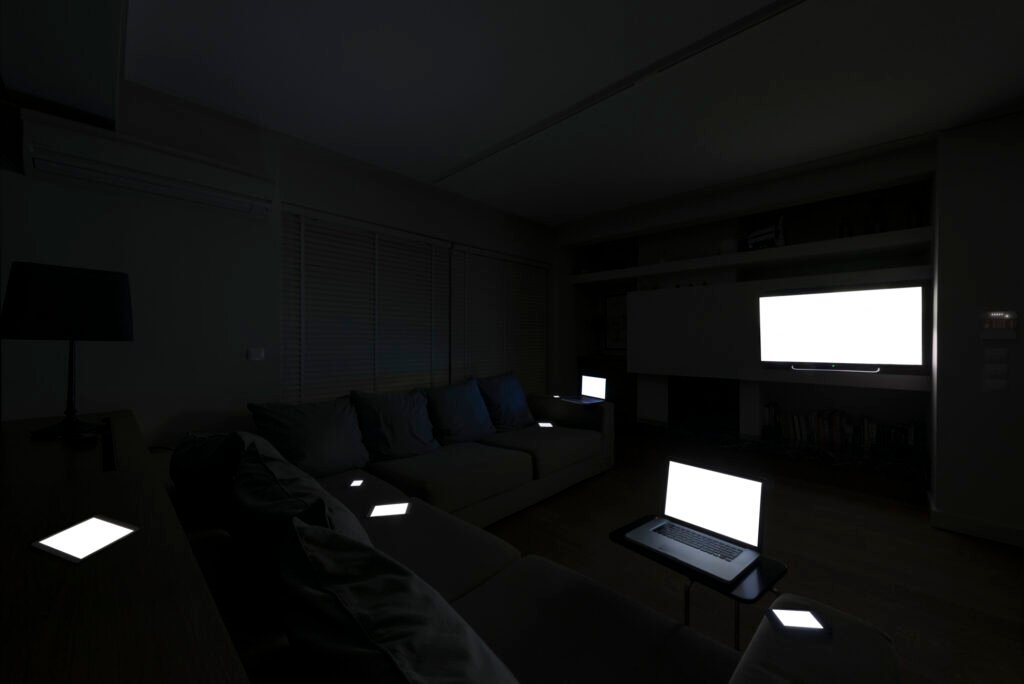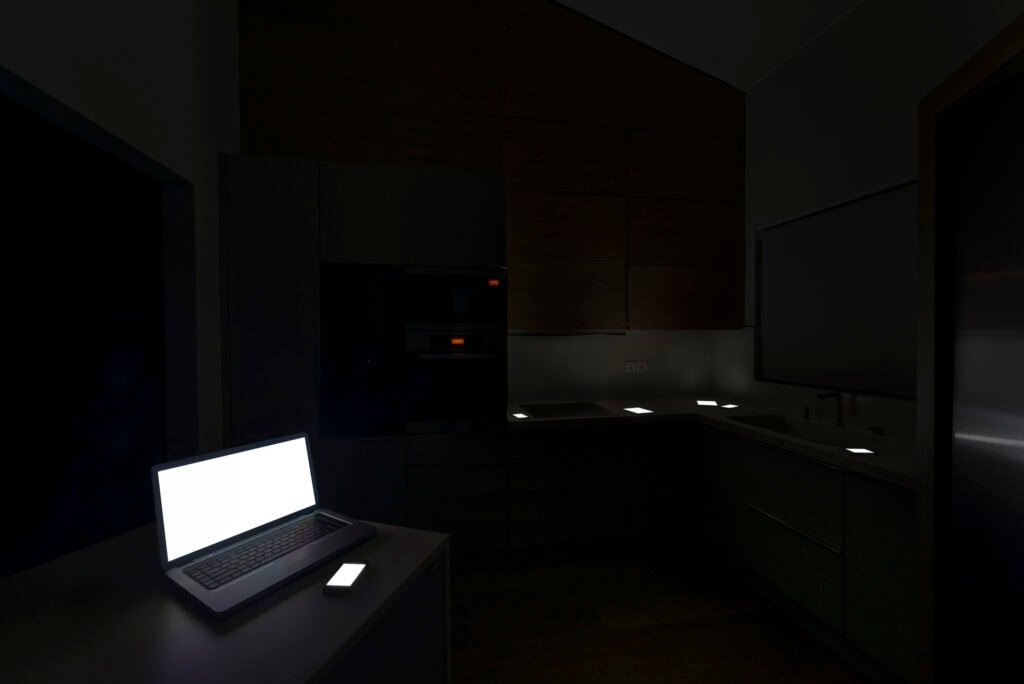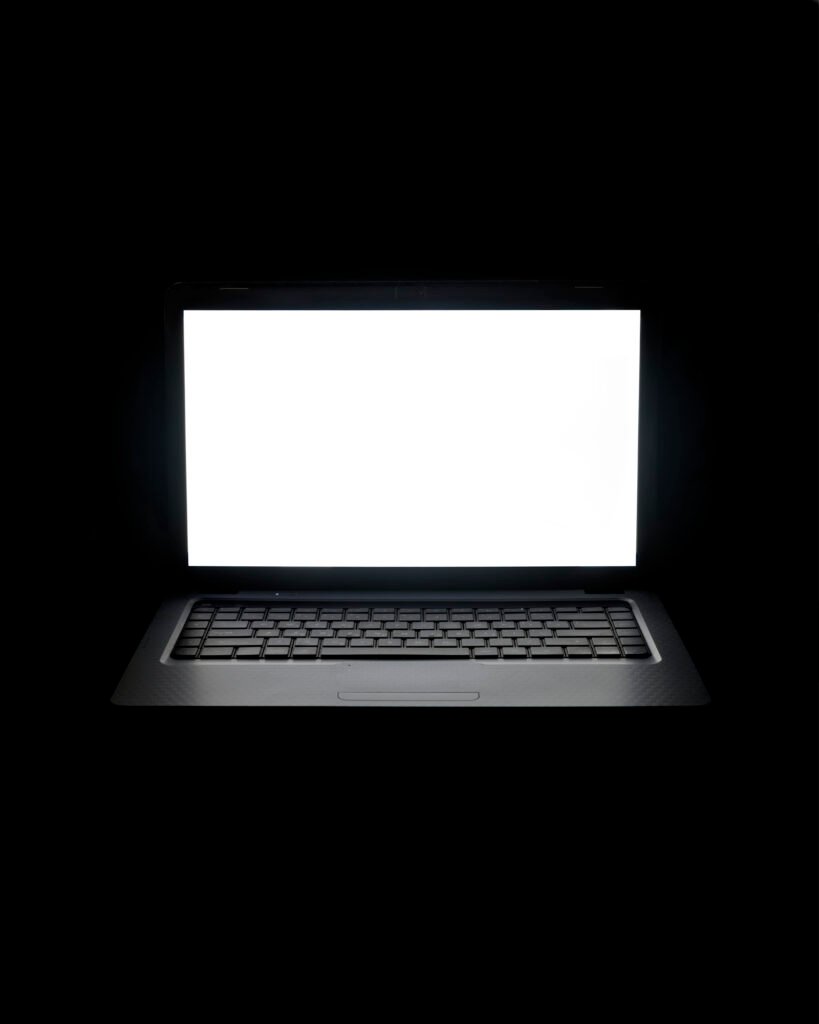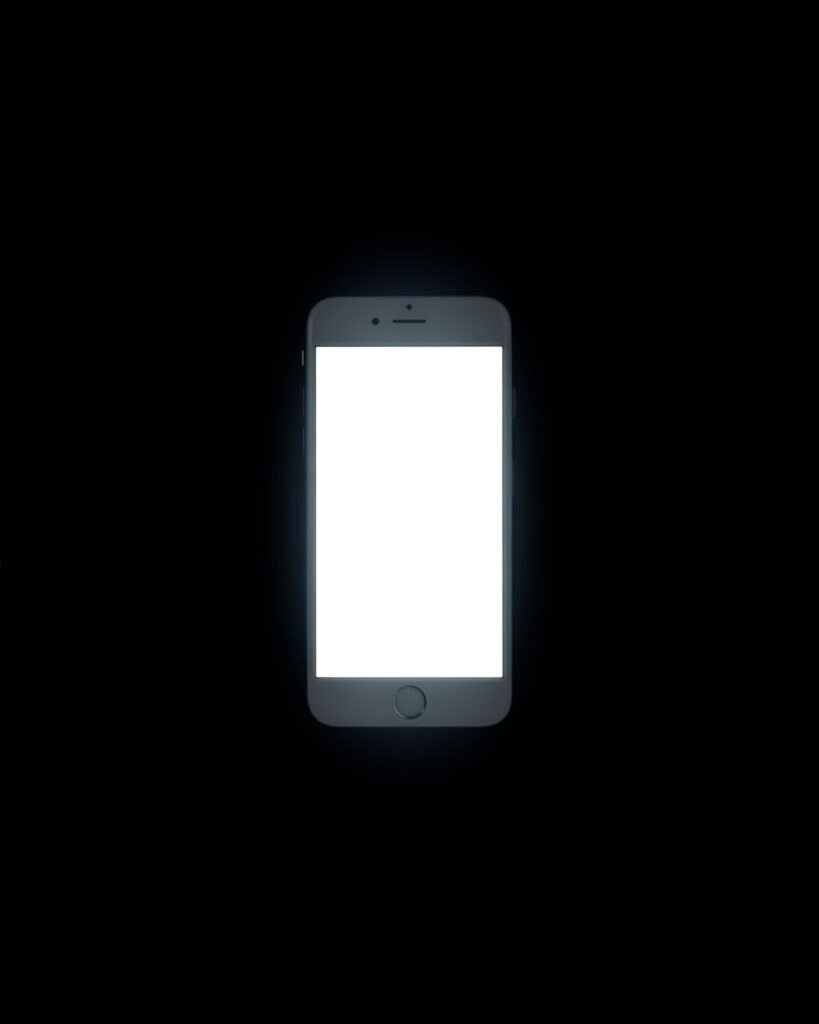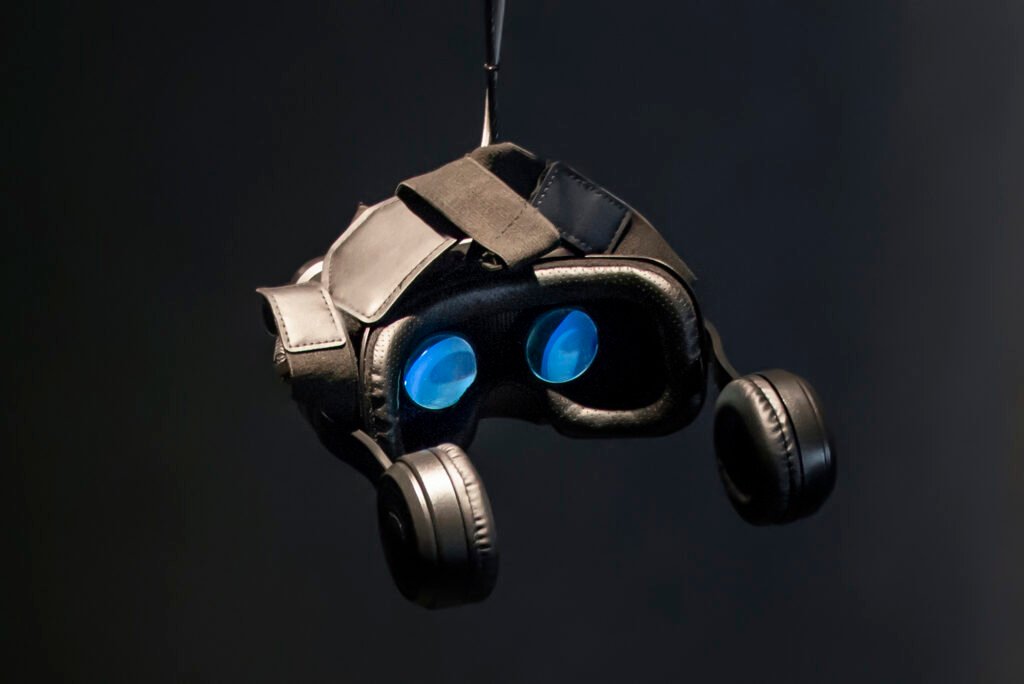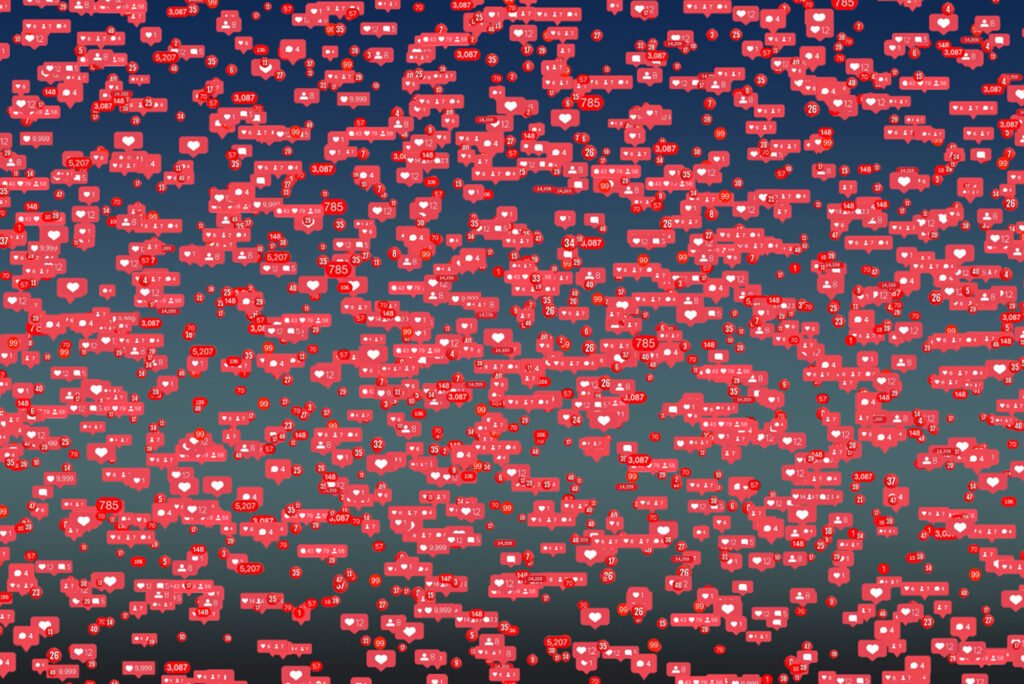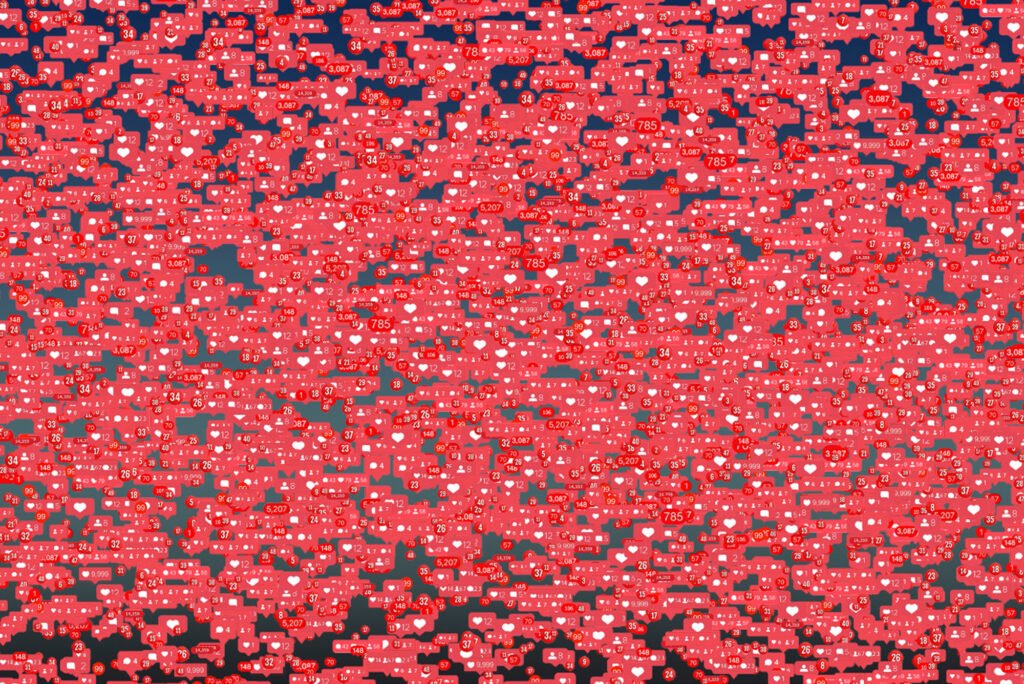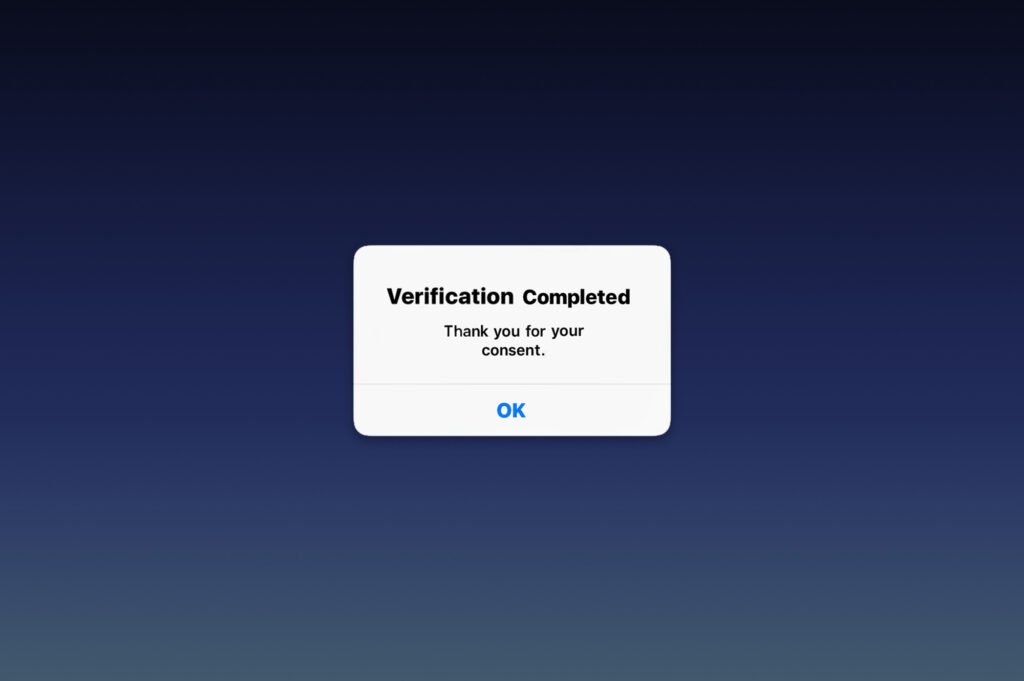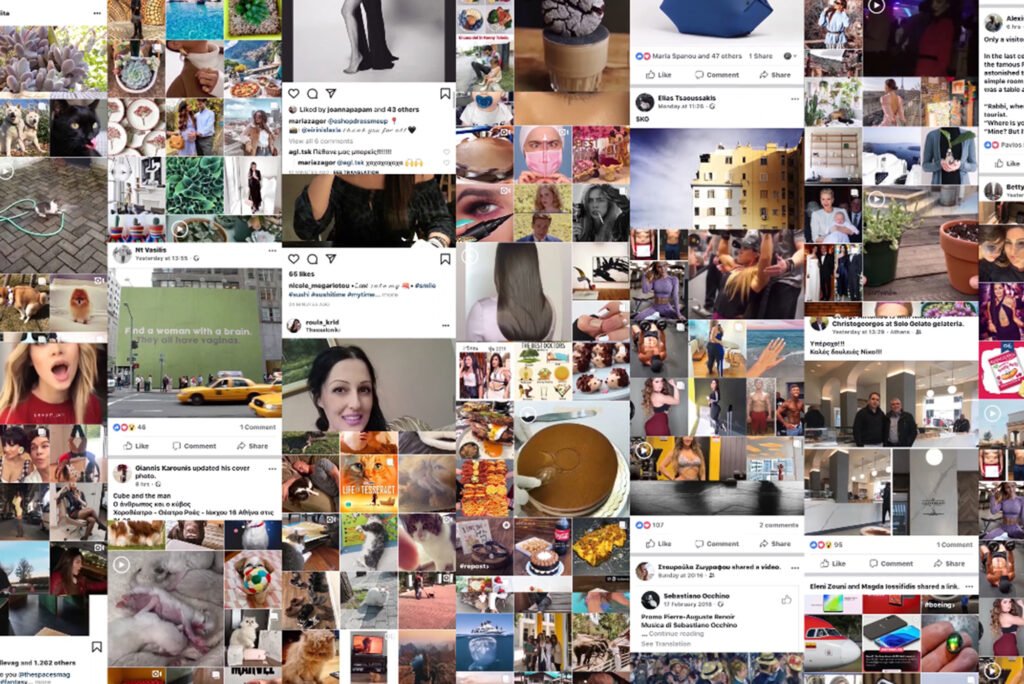The screens of the connectible devices we use are the only way we can have access to this parallel man-made universe, the Internet. Our lives have changed, from the simplest task to the way we perceive the world around us. Those devices guide us trough the real world, they answer our questions, they advice us and keep us company day and night. We look at them, touch them and talk to them in almost an intimate way.
Acknowledging these facts made me look at these devices from a different perspective. In this series I create family portraits of devices, reversing the subject/object relation. In this casual scenery of our everyday life, our comfort zones this multitude of glowing immersive gates, like an opposite of black holes, promise limitless possibilities. Information, entertainment, human connection and much more, are available anywhere and anytime, breaking the physical bond with the reality that surrounds us.
Never before had communication been so easy. Social networks and countless applications are created to serve our constant need for human connection but is there any chance that we have achieved the opposite?
Having for the first time in history such an easy and direct access to a huge and constantly increasing volume of information has made us wiser or are we just creating a detailed and multidimensional mirror of ourselves where we constantly seek our reflection as a confirmation of our existence? Or do these ‘’extensions of our hands’’ have actually replaced our best friends, our family or even our lovers?
The statistics
A big part of my research was based on statistics about the use of internet and the connectible devices. The immensity of the internet is nearly impossible to visualize in other way but through numbers, so all those infographics were the only way to find measurable aspects of what I am trying to convey. Charts, pies and graphics cause a kind of vertigo when attempting to realize what all those numbers mean, how big they are, how fast they grow.
In the presentation of the degree show all these stats were placed on the walls following the viewers’ usual movement in the studio, in order to create a narrative. Starting with some general facts about the internet such as the average time spent browsing per country, the number of users, the demographics of social media users, the amount of data uploading regularly the statistics become more and more descriptive, calculating the devices we own, how we use them, what we share and when, to become even more personal and intimate showing our preferences on porn sites, ending up with an overview of what kind of information data bookers have about us and how much it costs.
What becomes obvious from this overview is the predictability of human behavior. All these numbers are not referring to the Internet but to our behavior in it. We are these numbers.
Living in an era where the management of immense amounts of data has become an ever growing problem we don’t lack information, we are overwhelmed of it. Our attention is the currency in this new economy.
The photographs
What is a photograph today? This question has become more and more complicated over the years. Photography has changed the past decades a lot, it has evolved from a finite piece of paper to new states of existence that is still difficult to understand or describe completely. Photography’s “weight” has shifted from the past to the present. Photographs today tend to be less the memory objects that they used to and more a proof of the moment they are referring to.
Reflecting on that simple question I decided to photograph today’s photographs. But today’s photographs are displayed on screens, they emit light and vanish from view after a while, they are constantly moving and replacing each other in a never ending stream. In my attempt to capture their fleeting quality and their endless volume I was left with a blank screen. Blank and empty as our state of mind after a long scroll.
Playing with the technical aspects of the medium itself I am trying to portray its current state. Mobile devices are able to produce, display and distribute photos by default, becoming totally self efficient in means of imagery management. The camera, the photograph and the sharing network merge in this one object gaining unprecedented power over the media that preceded it.
If an image doesn’t fit the specific requirements set by this distribution network, such as first and foremost, be digital, comply with size limitations and automatic content censorship, it has no place in front of our eyes.
The Virtual Tour
Clicks, blinking sounds, emojis and gifs.
Notifications, alerts and emails (mostly spam).
Connected, still lonely.
Limitless possibilities, predictable choices.
Vast information, limited attention.
Fragmented impressions of never-ending streams.
Testimonies of the present, deleted by tomorrow.
Images, more images.
And here we are, ceaselessly watching.
I am frequently experiencing myself in places like the one I created. The main idea was to create a house interior that is a common experience for most of us, but make the visitor feel as an intruder in somebody else’s house. By depriving the familiar feeling one perceives the rather usual scenery as extraordinary, letting him evaluate the situation he is into with a fresh perspective.
To create this virtual tour I found the interior that suited my purpose and placed around the devices of the inhabitants of the house. Using photography in a certain technique I created a navigable environment that the viewer can explore at his own will. Inside this virtual installation photography is the building block of an experience. (The hole VR experience is constructed out of panoramic 1:2 ratio JPGs or videos created out of JPGs )
Being surrounded by a photograph that looks nearly as real as reality poses even more questions about what photography is and where that leads us.
Furthermore the screens inside the virtual tour are navigable also. Just by looking at them the viewer is transferred inside them, experiencing environments that exist only digitally. Immerged into videos and surrounded by sounds the real and the virtual come closer, making it difficult to rely on your senses.
Maria Mavropoulou was born in 1989 and she lives and works in Athens, Greece. She completed her MFA studies in 2018, at Athens School of Fine Arts, from where she got her BA in 2014. She has studied painting and sculpture, although her main medium is photography while her work expands to new forms and uses of the photographic image, such as VR. The resulting images are at the boundary line between plausibility or not, potentiality and non-potentiality, random and constructed.
Playing with the perception of viewers she aspires to question the role and power of photography in an era that is dominated by it.
Her work has been presented in numerous exhibitions in Greece and abroad and publicized in multiple magazines.

